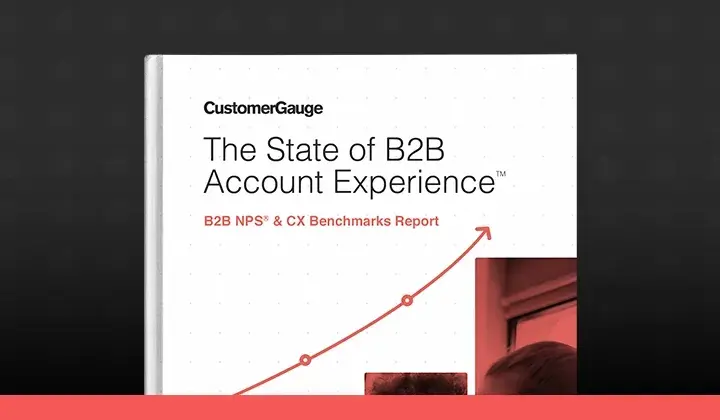In recent years there has been a shift by many companies to understand the loyalty of their customers. This change has come about due to a realization that the old attitudes, that saw customer experience as far from a priority, were missing opportunities of revenue and growth.
Why though is segmenting customers according to their loyalty so beneficial? The one simple answer is the ability to ‘divide and conquer.’ Through the act of division, experiences can be created that address customers in nuanced personalized ways, leading to a variety of rewards for companies.
To understand this, let’s illustrate a little scenario.
So you know you have customers who are dissatisfied with your product(s) or service(s), and you want to provide an all-round better experience for your customers because you believe this is the way to greater growth for your company.
To figure out what issues your customers experience, you decide to carry out some research/surveys, which solely measure the loyalty of your customers to your company and its main drivers. Based on the result of the survey, you divide your customers in three different groups. Therse groups being disloyal, indifferent and loyal.
Now you know which customers are loyal and who is at risk of leaving. This little piece of information then, provides an enormous amount of power - the power to act. Specific loyalty based resolution strategies and further research can now be created and carried out.
For example, pairing the individual revenue data of customers with their loyalty data means a significant gain in the way a company may carry out its customer experience. For those customers who report high levels of disloyalty and yet spend much higher than the average customer, can be signaled as ‘urgent’ or ‘top priority’ to resolve. While customers who report a similar disloyalty but spend significantly less than the average customer may be considered differently. Knowing the loyalty of customers in relation to their expenditure has enormous potential for creating better-individualized strategies that benefit both customer and company.
While prioritization can be important for many businesses (those with limited resources), loyalty segmentation actually serves the entire customer base of a company – it doesn't just serve those customers at risk of leaving. Knowing where each customer falls along a loyalty scale is important, as there are potential gains for a company at each point.
Firstly, retaining customers is far cheaper than gaining new ones. That said, while all customers have a likelihood of leaving, those that fall in the disloyal range have a higher probability of leaving. Knowing which customers are disloyal and how disloyal means relevant action can be taken in order to retain them and potentially turn them into loyal customers.
Turning disloyal customers into loyal customers is reason number two as to why all customers are important. For at the other end of the loyalty spectrum comes revenue rewards too.
While, as mentioned above loyal customers are less likely to leave a company, this is not the only benefit they impart on a company. Due to the fact that loyal customers value companies for more than just the price of their products, they are less susceptive to price. The result of this being that price fluctuations play less of a role in triggering purchases or deterring purchases.
Furthermore, the greater the loyalty of a customer, the greater spending a company is likely to receive from them. Such as increased purchase rates, upgrading to higher priced products or services and also embracing new products or services.
Lastly, striving to make customers more loyal means a higher positive referral rate (around 80%) in comparison to disloyal customers who are more likely to negatively refer companies (around 80%).
Now, let’s flip the story
Imagine instead, you don’t do any segmenting by loyalty. However your goal is still the same, you want to provide a better total experience for your customers so that in turn they reward you through such things as loyalty, increased revenue and referrals. What would be your plan of action?
To not dramatize the counter-example too much, let’s assume you do some customer feedback surveys, in which customers are queried about specific touchpoints with your company or experiences with your product(s). And while this information is relevant and able to be used to segment customers, you don’t link it to individual customer data. So this feedback gives you no idea of the sentiment of your individual customers towards your company. Is your customer extremely dissatisfied with your company or totally in love with you.
Of all the customers who leave you negative or positive feedback, whom do you address first? Furthermore, how do you go about managing the relationship a customer has with your company if you have no understanding of their loyalty?
You may answer that this is not important, it is not needed in creating a better overall experience for the customer. If the customer provides negative feedback about a specific aspect, therein lies your problem and an according solution can be found. The reason this is wrong though, is because not segmenting by loyalty means squandered revenue, lost opportunities.
To end the story
Not understanding the loyalty of your customers means you are not getting the most out of your customer experience efforts.
Instead of effectively managing each one of your customers in relation to their loyalty, so that you may save at risk customers, shift disloyal customers to loyal customers and turn loyal customers into amazing revenue and referral machines. You are blind, grabbing at customer issues in the darkness, not sure if this customer or another is at risk of leaving or instead should be rewarded.
By breaking customers into smaller distinct loyalty groups, companies are empowered to create group specific strategies, resulting in the customer receiving a better experience and in turn rewarding the company for doing so.

